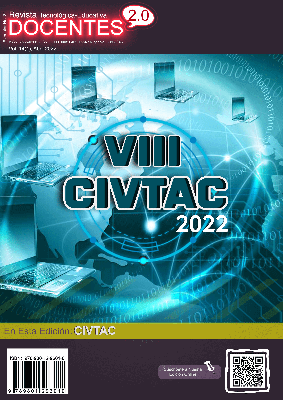Modification of the Altman Model Z Score: Indicator of Financial stability
 DOI:
https://doi.org/10.37843/rted.v14i1.298
DOI:
https://doi.org/10.37843/rted.v14i1.298
Main Article Content
Abstract
A primary strategy is to place funds in a solid financial institution, totally free of any economic stress, financial problems, or suspicions of instability over time. This research was developed to apply a modification to the Altman Z-Score model as an indicator of economic stability for the Banco de Finanzas de Nicaragua case in 2022. It is developed under the analytic-synthetic method, pragmatic paradigm, hybrid approach, hypothetical-deductive type, and contemporary triangular design. Interviews with experts and officials support the qualitative factor. The quantitative is represented in a sample of historical financial statements 2016 -2021, published by the Superintendency of Banks and Other Financial Institutions - SIBOIF. The multiple linear regression model was obtained as a statistical tool through the IBM SPSS Statistics 23.0 program. New coefficients and response ranges will modify the Altman Model for use in the Banco de Finanzas. The modification of the Altman ???? Score Model will substantially contribute to Banco de Finanzas' business management, supporting its analysis and financial estimates for efficient decision making; predicting future stability behaviors for the year 2022. Finally, its application by the SIBOIF can be recommended, representing an approximation, test, or test to be considered as a prudential regulation.
Downloads
Metrics
Article Details

This work is licensed under a Creative Commons Attribution-NonCommercial-NoDerivatives 4.0 International License.
Those authors who have publications in our journal accept the following terms:
- When a work is accepted for publication, the author retains rights of reproduction, distribution of his/her article for exploitation in all countries of the world in the format provided by our magazine and any other magnetic medium, optical, and digital.
- Authors will retain their copyright and guarantee the journal the right first to publish their work, which will be simultaneously subject to the Creative Commons Acknowledgment License (Attribution-NonCommercial-NoDerivatives 4.0 International (CC BY-NC-ND 4.0)). That allows third parties to copy and redistribute the material in any medium or format, under the following conditions: Acknowledgment - You must properly acknowledge authorship, provide a link to the license, and indicate if any changes have been made. You may do so in any reasonable way, but not in a way that suggests you have the licensor's endorsement or receive it for your use. NonCommercial - You may not use the material for a commercial purpose. NoDerivatives - If you remix, transform, or build from the material, you cannot broadcast the modified material. There are no additional restrictions - You cannot apply legal terms or technological measures that legally restrict you from doing what the license allows.
- Authors may adopt other non-exclusive license agreements to distribute the published version of the work (e.g., deposit it in an institutional archive or publish it in a monographic volume) provided that the initial publication in this journal is indicated.
- Authors are allowed and recommended to disseminate their work through the Internet (e.g., in institutional telematic archives, repositories, libraries, or their website), producing exciting exchanges and increasing the published work's citations.
- Request of withdrawal an article has to be done in writing by the author to the Editor, becoming effective after a written response from the Editor. For this purpose, the author or authors will send correspondence via e-mail: [email protected].
- The author will not receive financial compensation for the publication of his work.
- All Docentes 2.0 Journal publications are under the Open Journal System (OJS) platform at: https://ojs.docentes20.com/.
References
Avello, R., Rodríguez, M., Rodríguez, P., Sosa, D., Companioni, B. & Rodríguez, R. (2019). ¿Por qué enunciar las limitaciones del estudio? Medisur, Vol. 17, 10 – 12.
Belalcazar, R. & Trujillo, A. (2016). ¿Es el modelo Z - Score de Altman un buen predictor de la situación financiera de las Pymes en Colombia? [Tesis de máster, Universidad EAFIT]. https://repository.eafit.edu.co/handle/10784/11575
Bermeo, D. & Armijos, J. (2021). Predicción de quiebra bajo el modelo Z2 Altman en empresas de construcción de edificios residenciales de la provincia del Azuay. Revista Economía y Política, (33), 48 – 63.
Carballo, M, & Guelmes, E. (2016). Algunas consideraciones acerca de las variables en las investigaciones que se desarrollan en educación. Revista Universidad y Sociedad, vol. 8, 140 - 150.
Carpio, N. y & Hernández, C. (2019). Introducción a los tipos de muestreo. Revista ALERTA, Vol. 2 N° 1, 75 – 79. https://doi.org/10.5377/alerta.v2i1.7535 DOI: https://doi.org/10.5377/alerta.v2i1.7535
Contreras, J. (2016). Análisis de quiebra empresarial: modelo de ecuaciones de estimación generalizadas sobre datos panel [Tesis doctoral, Universidad Complutense de Madrid]. https://eprints.ucm.es/id/eprint/37377/1/T37123.pdf
Cotán, A. (2016). El sentido de la investigación cualitativa. Escuela Abierta, No. 19, 33 - 48. DOI: https://doi.org/10.29257/EA19.2016.03
Gómez, O., Imaicela, R., Morocho, F. & Reinoso, G. (2019). Modelos financieros en la previsión en el mal manejo empresarial. Revista Observatorio de la Economía Latinoamericana. https://www.eumed.net/rev/oel/2019/08/prevision-manejo-empresarial.html
Goyanes, M. (2015). ¿Hacia una investigación estandarizada? Observatorio (OBS*), vol.9 - nº3, 085-099.
Guerrero, R.; Lenise do Prado, M. & Ojeda, M. (2016). Reflexión crítica epistemológica sobre métodos mixtos en investigación de enfermería. Enfermería Universitaria, No. 13(4), 246 – 252. http://dx.doi.org/10.1016/j.reu.2016.09.001 DOI: https://doi.org/10.1016/j.reu.2016.09.001
Hernández, R.; Fernández, C. & Baptista, M. (2014). Metodología de la Investigación. Pautas y estrategias para el tutor. McGRAW-HILL.
Instituto de Educación Superior Intercontinental de la Empresa – IESIDE (2017, 30 de mayo) Conferencia Edward Altman [Video]. https://www.youtube.com/watch?v=bMm_zWKxOs0
Mousalli, G. (2015). Métodos y Diseños de Investigación Cuantitativa. https://cutt.ly/cj7vSPh
Paz, K. y & Torres, M. (2019). Métodos de recolección de datos para una investigación. Universidad Rafael Landívar. http://biblioteca.udgvirtual.udg.mx/jspui/handle/123456789/2817
Questionpro. (2021, Enero). ¿Qué es la investigación documental?, Questionpro. https://www.questionpro.com/blog/es/investigacion-documental/
Salazar, N. & Silva, A. (2019). ¿El modelo de Z - Score de Altman permite prever el estado de quiebra en las Pymes? [Trabajo de Especialización, Corporación Universitaria Minuto de Dios]. https://repository.uniminuto.edu/handle/10656/9873
Segura, R. (2020). Aplicación del modelo Z - Score a la cartera de SRM para evitar incrementos de morosidad [Trabajo de Licenciatura, Universidad Ricardo Palma]. http://repositorio.urp.edu.pe/handle/URP/3368






